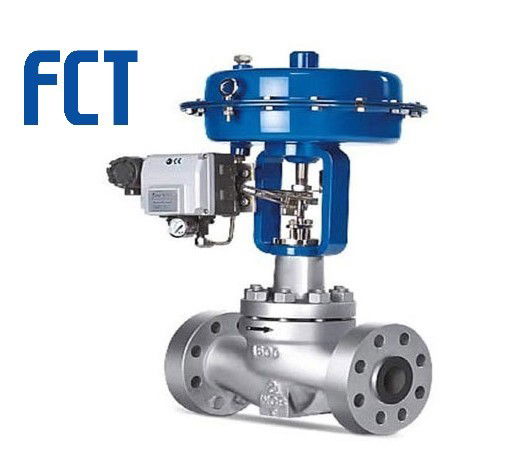Discovering the Functionality of Modern Control Valves in Industrial Applications
Discovering the Functionality of Modern Control Valves in Industrial Applications
Blog Article

Maximize Power Financial Savings and Convenience With Advanced Structure Automation Controls
In the world of contemporary architecture and facility monitoring, the assimilation of sophisticated building automation manages stands as an essential innovation. The convergence of innovation and sustainability has birthed a new era where power performance, comfort optimization, and operational streamlining are no longer obtainable facts however remote aspirations. By harnessing the power of automation, buildings can adjust, respond, and evolve in manner ins which were when inconceivable. The potential for substantial energy cost savings and enhanced convenience is not just an opportunity however a guarantee waiting to be satisfied. This paradigm change in building management holds the vital to opening a globe where ecological conscientiousness and resident health harmoniously exist side-by-side within the walls of our frameworks.
Power Efficiency Benefits
Power effectiveness benefits can dramatically lower power intake and functional expenses in structures. Energy-efficient systems, such as innovative building automation controls, can optimize the usage of resources like air conditioning, illumination, and heating, leading to lower power costs over time.
Additionally, boosted power efficiency can lengthen the life-span of building tools and systems. By running a lot more efficiently, a/c systems, lighting fixtures, and various other building parts experience less damage, leading to reduced upkeep and replacement expenses. In addition, energy-efficient structures commonly command higher building worths and rental prices, giving lasting monetary advantages to proprietors.
Moreover, power performance can enhance passenger convenience and productivity. Appropriately regulated indoor settings with optimal illumination and thermal problems create an even more favorable and pleasurable work space, causing improved staff member complete satisfaction and efficiency. In general, the energy performance advantages related to advanced building automation controls are multifaceted, including expense financial savings, ecological stewardship, and resident well-being.
Improved Comfort Control
Enhancing comfort control in building settings needs an advanced integration of advanced automation systems for optimum passenger well-being. By utilizing sophisticated building automation controls, facilities can tailor the interior atmosphere to meet the certain needs and choices of residents. control valves.
By including these advanced controls, buildings can not only improve comfort however additionally improve energy performance by enhancing system procedures based on actual tenancy and usage patterns. Inevitably, prioritizing resident comfort with innovative automation systems leads to a more pleasurable and much healthier interior atmosphere.
Functional Performance Improvements

Additionally, the implementation of real-time monitoring and analytics devices makes it possible for structure operators to identify energy inefficiencies and operational anomalies quickly. By constantly keeping an eye on power usage patterns and system efficiency metrics, adjustments can be made in real-time to maximize energy usage and ensure peak functional efficiency. control valves. Additionally, integrating need reaction approaches into structure automation controls can better improve functional efficiency by dynamically changing energy use based here on grid problems and pricing signals
Indoor Environment Optimization
Efficient interior climate optimization is a basic aspect of structure automation controls, making sure passengers' comfort and wellness while taking full advantage of power cost savings. By utilizing innovative sensors and controls, developing automation systems can constantly adjust and keep track of temperature level, moisture degrees, air quality, and ventilation to produce an optimum indoor atmosphere. Keeping constant and comfortable problems not only improves passenger fulfillment yet also increases efficiency and total health.
Interior environment optimization also plays a critical role in energy performance. By fine-tuning ventilation, air conditioning, and home heating systems based upon real-time data and tenancy patterns, constructing automation controls can substantially minimize power consumption - control valves. Executing methods such as demand-controlled ventilation and thermal zoning can help decrease energy waste while ensuring that each location of the building gets the necessary conditioning.

Lasting Environment Creation
Structure automation controls not just maximize interior environment conditions for energy efficiency and occupant comfort yet also lay the structure for creating a lasting setting with strategic management of sources and systems. By integrating innovative building automation innovations, such as sensors, actuators, and smart software program, facilities can change and check energy usage in real-time to decrease waste and reduce their carbon footprint. These systems allow anticipating upkeep, identifying prospective concerns prior to they escalate and optimizing tools efficiency to enhance durability and efficiency.
Additionally, sustainable atmosphere production prolongs beyond power management to include water conservation, waste decrease, and interior air quality improvement. Building automation controls can regulate water usage, find leakages, and make certain proper waste disposal methods, adding to overall sustainability efforts. Additionally, by keeping track of and managing ventilation and filtration systems, these innovations enhance owner wellness and productivity while reducing energy intake related to cooling and heating operations.
Final Thought
To conclude, advanced structure automation manages deal substantial benefits in terms of power savings, comfort control, operational effectiveness, interior environment optimization, and creating a sustainable atmosphere. By executing these controls, structures can achieve ideal efficiency while reducing power usage and improving owner convenience. It appears that making use of innovative automation innovation is important in enhancing structure performance and producing a much more lasting future.
Energy efficiency benefits can considerably reduce energy intake and operational prices in buildings. On the whole, the energy performance benefits his response linked with innovative building automation controls are complex, including cost financial savings, environmental stewardship, and occupant health.
In addition, including need reaction techniques into building automation controls can additionally improve functional performance by dynamically adjusting power usage based on grid problems and look at here prices signals.
Structure automation manages not only maximize indoor environment conditions for power efficiency and occupant comfort yet likewise lay the structure for producing a lasting atmosphere with strategic administration of systems and resources.In final thought, advanced structure automation controls offer considerable advantages in terms of energy cost savings, comfort control, functional performance, interior climate optimization, and producing a sustainable environment.
Report this page